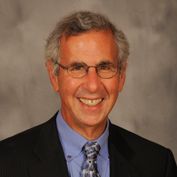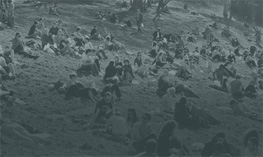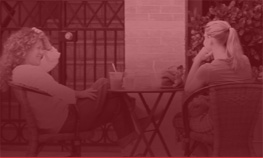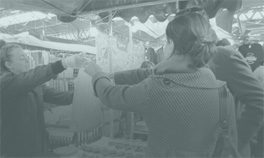Building the Opportunity Economy
Written by Robert Friedman, Prosperity Now[The objective of government is] to elevate the condition of men — to lift artificial weights from all shoulders — to clear the paths of laudable pursuit for all — to afford all, an unfettered start, and a fair chance, in the race of life.
Abraham Lincoln
We start with the recognition of the capacity and productive potential of low-income and economically-marginalized people: they are all potential creators of wealth, whether as skilled workers, entrepreneurs, home owners, savers or investors. All of us have weaknesses and needs, but the truth is that meaningful development relies more on building on the strengths of people than on remedying their perceived deficiencies.
Since I founded the organization 36 years ago, CFED has undertaken, with support from many national foundations, a series of large national demonstrations informed by that asset-based thinking.1 These have involved dozens of community groups and state and federal policy partners, and they have included rigorous evaluation research. The essential lesson is that given a reasonable opportunity, low-income people will save, go to college, start businesses, buy and keep homes, and build their families’ economic futures, as well as those of their communities and the country as a whole.
Our earlier work was the outgrowth of two asset-building fields that emerged in the 1980s. They were parallel and largely separate, but, in a larger sense, joined at the hip. The first was spawned in the women’s self-employment field and later encapsulated and impelled by Michael Sherraden’s revolutionary Assets and the Poor. The second was the Asset-Building Community Development field inspired by John McKnight and his colleagues, built on the theories of Ivan Illich and Paolo Frieri, which insists on treating low-income and marginalized people as assets. Going forward, we should recognize the sisterhood of these two understandings of asset-building.
In the mid-1980s, CFED was charged with studying what worked in economic development. We entered that inquiry suspecting that some strategies — self-employment, training, business lending — might prove superior to others. Instead, we ended up concluding that all the strategies worked if they built the confidence, competence, connections, and capital of families.
These earlier foundational concepts have been incorporated in our current understanding of financial well-being and capability. As Andrea Levere and Leigh Tivol note in their introductory essay, the CFPB defines financial well-being as:
- Feeling in control of one’s day-to-day finances;
- Having the capacity to absorb a financial shock;
- Being on track to meet financial goals; and
- Having the financial freedom to make choices to enjoy life.
These evolving concepts and lessons are helping us reimagine our work as well. What makes an individual or family financially capable and healthy is very similar to what makes a broader movement successful. In other words, we turned the microscope on ourselves and found that our ability to execute on what our clients needed required new ideas, new partners, and new resources. It requires a new coalition working together for a common cause.
We must integrate financial well-being into social services, housing, education, health, and workforce development programs — helping those fields understand the importance of their clients’ financial well-being to the success of their programs. As we build these new relationships and business models, we are reminded of what we learned long ago: multiple strategies are successful if we instill confidence, build competence, extend connections, and add capital.
If we are successful in this broader movement, we will be doing more than helping people climb out of poverty. We will generate economic growth for the nation — building an “opportunity economy.” We offer nothing less than opening the doors of this economy to all who would enter — as entrepreneurs, skilled workers, students, homeowners, and creators of wealth. Providing a realistic opportunity for every American to amass a few hundred or thousand dollars each year in liquid assets — if matched by their own work, dreams, saving, and effort — would be transformative. To do this work successfully, along with our partners from other sectors, would give individuals and families a much better chance to succeed and contribute. It would empower and embolden millions of low- and middle-income people and families to re-enter and revitalize the American economy.
If it were successful, this movement could redeem Abraham Lincoln’s vision of government; it would create the opportunity economy, where everyone has a chance to play and to contribute his or her vision, talents, and dreams. And in that economy, everyone is better off.
Challenges to the Opportunity Economy
In all the rising talk about inequality, the extent and impact of wealth inequality is underappreciated. As the essays by Ray Boshara and Phil Longman (among many others) document, wealth inequality is larger and growing even faster than income inequality. The result, as research discussed by Jennifer Tescher and Rachel Schneider shows, is increasing financial stress and ill-health. Liquid asset poverty — the lack of assets to withstand even a short period without income — extends well beyond the poor, approaching half the population. As Phil English and Jeremie Greer demonstrate in this volume, this is an issue that is affecting a growing share of the American population, creating hardship and limiting opportunity in Red States and Blue States alike, a fact that explains why it draws concern across the political spectrum.
Nevertheless, that asset poverty extends so broadly should not blind us to the fact that its severity, its history, and its dynamics vary across the population. Although a majority of the population suffers liquid asset poverty, it is concentrated. Nearly two-thirds of African Americans, Latinos, and Native Americans experience liquid asset poverty, as do specific subgroups within the Asian American and Pacific Islander community to a lesser, but swiftly growing degree. Although each of these communities of color own just a few cents for every dollar owned by their white fellow citizens — a result of very different histories and structures — each may respond to different solutions. Asset poverty is similarly extreme among younger and older Americans, people with disabilities, ex-offenders, and foster children. Each group deserves its own attention and remedies, even as we build common understanding and solutions.
At a fundamental level, reducing wealth inequality and increasing economic mobility is about money. Especially among the asset-poor majority in this country, the price of entry to the economic mainstream is at least a few hundred to a few thousand dollars. Certainly, respecting the demands of history and justice and beginning to close the racial wealth gap will require developing significant asset bases among excluded and marginalized communities. The essays in Section 3 of this book show just how large that gap is. But if the practice and research of the last 25 years demonstrates anything, it is the power of even a few hundred dollars in disposable assets to unleash the dreams, energy, plans, and investment of families.
How Do We Get There?
Julian Bond, a close associate of Dr. Martin Luther King, Jr., used to tell audiences not to confuse the Civil Rights movement with the triumphs like the 1963 March on Washington with its hundreds of thousands. He said that was rare. What built the movement was night after night of meetings in cold church basements with 20 or 30 committed people trying to find how they could contribute to change. It was small acts by ordinary people that added up to a stronger movement. It was a river that was fed by many streams.
Our movement must be fed by many streams, too. It is tempting to try to simplify our path forward by cleaving to one or the other of these streams of innovation and learning in the asset-building and antipoverty fields. But the truth is that the growth of the field has been defined by the interaction of these streams, often turbulent and messy, but essential and procreative. As we move forward, tackling the challenges and opportunities of scale, this interaction will be essential. It will be incumbent on leaders and laborers in the field to remain attuned to the inspirations, challenges, and lessons of the other tributaries. I will highlight thoughts on some of those interrelated strategies below.
One of the streams is savings. And here we have had great successes, such as the Individual Development Account (IDA). This asset-building tool, developed by Michael Sherraden, is elegant, powerful, and (deceptively) simple. It combines financial education with a concrete tool — a savings account — and then layers on another strategy of providing a financial incentive — a match to whatever the individual saves — to create the habit to save and build wealth.
Savings, of course, is much more than just a rainy day fund. It is a change in mindset. Liquid savings have proved to be a key gateway to each of these asset pathways, raising expectations, preparedness, and confidence even while providing the wherewithal to invest in each of these paths.
Children’s savings accounts (CSAs), incentivized savings accounts starting as early as birth, which, almost alone among the college finance tools, build not only a college fund but also college expectations, preparedness, and family engagement, must be a critical part of the mix of solutions. The recently launched Campaign for Every Kid’s Future seeks to make sure every child in America can be automatically enrolled in a CSA, setting expectations and aspirations that will have reverberations for generations.
Retirement savings rank among the most developed and subsidized class of assets, and a focus of current concern given the ballooning elderly population, most of whom lack adequate retirement savings. For many people, achieving retirement security requires a lifetime of effort, beginning with an early focus on emergency and education savings, and transitioning to entrepreneurship and homeownership in mid-life.
Whatever the power of IDAs and savings accounts, helping families maximize their potential raises a larger challenge and opportunity, which in turn demands a larger palette. Thinking beyond savings often leads to more expansive ideas such as the “household financial balance sheet” and the “Household Financial Security Framework,” which embraced and rationalized the growth of the field, extending from financial education to earning, saving, and investing in key assets.
Perhaps the most important key asset is homeownership. Most household wealth, for example, derives historically from homeownership, bolstered by policies such as the creation of the 30-year fixed-rate mortgage by the Federal Housing Administration. This policy opened a powerful asset path for white Americans, even while — as Dedrick Asante-Muhammad points out in his essay — closing it off for many communities of color.
Home equity took a huge hit during the Great Recession, especially in communities of color, who lost up to one-half of their recent gains, plunging many families into debt and homes into foreclosure, and causing asset advocates and the larger community to question the preeminence, even the wisdom of homeownership as an asset-building path. Instead, I believe we must restore this historic source of economic mobility, underwriting as it does educational attainment, social stability and entrepreneurship. At the same time, as Rick Lazio argues persuasively in this volume, we must also devise better tools and policies that make it far easier for renters to build credit, savings, and equity.
Of course, savings and assets are necessary but insufficient pieces of an adequate answer; we must also make higher education more accessible and affordable. Education, especially postsecondary education, is generally recognized as the surest path to a living wage and economic mobility. But as Martha Kanter and Sarah Bloom Raskin suggest in their essays, the student debt crisis and the distressingly low college attendance and graduation rates, especially among low-wealth Americans and communities of color, demand an almost wholesale rethinking and remaking of how we finance postsecondary education and help students choose what is best for them. This includes, as an essential starting block of economic citizenship, CSAs. These progressive, universal accounts feature opt-out automatic enrollment, which catalyzes lifelong savings and lays an early foundation for financial capability where, as former IRS Commissioner Fred Goldberg explains, “everyone has a number and everyone plays.”
Entrepreneurship is another key strategy for expanding the opportunity economy. Consider that business assets are second only to home equity as a contributor to household wealth. And entrepreneurship is the key to job creation and employment, as Chair Yellen points out in her foreword. Although most new businesses are financed with personal savings and the savings of friends, family, and associates, none of the current savings account systems — IRAs, 401(k)s, 403(b)s, 529 Plans, myRAs — explicitly allows accounts to be invested in entrepreneurship.
We must also remove the many barriers that keep low-income people from fully using their potential in the opportunity economy. One overlooked but critical barrier is citizenship, which generates substantial earnings, mobility, and vitality returns. Another is connecting the 54 million Americans with disabilities to the labor market through innovative new programs and technology. Today, people with disabilities, who compose one-fifth of the population, have a shockingly high unemployment rate of 73 percent.
Context Matters: Making the Financially Smart Choice the Easy Choice
Many of the biggest innovations in financial capability during the last several years involve low-cost solutions, including opt-out automatic enrollment retirement systems, increased financial access through “Bank On” programs, behavioral economics-informed financial products and services, regulation of predatory lending, and integration of financial capability services within nonprofit and public social service, housing and education programs.
So too, we have learned that quite modest financial incentives can leverage significant changes. Where we once sought the multi-thousand dollar matches of IDAs, we now focus on $50 incentives for CSAs. Where we once sought 1:1 and 2:1 match rates, we now frequently think of 50 percent match rates and less.
We have made great progress in asset policy at all levels; viewed over time, the Assets and Opportunity Scorecard demonstrates steady gains in assets policies among states across the spectrum. But cheap policy is not necessarily cost-effective policy. Asset gaps are huge, and we will not even build adequate starting blocks on the cheap. IDAs are among the more expensive asset-building strategies, but the truly transformational nature of the outsized returns — homeless to homeowner, poor kid to college graduate, low-paid employee to independent entrepreneur — are well documented in rigorous evaluations.
How Do We Fund the Opportunity Economy?
Where will the money come from to afford this investment in unleashing the productive capacity of tens of millions of Americans on the fringes of the economy? There are two great sources: our existing asset-building tax subsidies and the common assets of the American people.
The United States has a large existing tax policy to encourage asset building — more than half a trillion dollars in annual income tax expenditures is devoted to subsidizing homeownership, retirement savings, higher education, business investments, and other types of assets. This subsidy averages out to approximately $1,600 for every man, woman, and child in the country annually.2 However, as several essays in this book point out, 90 percent of Americans cannot take advantage of their share of this national investment. The system is regressive, wasteful, and counterproductive. Yet the opportunity inherent in this system is tremendous. Without spending any new funds — in fact, even slashing the existing asset tax budget substantially to fund deficit reduction or other needs — we could deliver $1,000 annual savings incentives to every man, woman, and child in this country. In doing so, we could expand the ranks of homeowners, college students, skilled workers, and entrepreneurs by tens of millions per year, generating widely shared growth, jobs, mobility, and economic well-being.
There are also significant assets we hold in common as citizens that could help fund policies and programs that build the movement toward an opportunity economy. Last year, for example, the Alaska Permanent Fund sent checks of more than $1,900 to every Alaskan citizen, their share of proceeds on the sale of the oil endowment of the state. Peter Barnes, in his book With Liberty and Dividends for All, argues for establishing similar state and national trusts, recognizing, monetizing, and democratically distributing income from assets that are best construed as belonging not to the public sector or private interests, but to all people in common. These include the carbon-absorbing capacity of the atmosphere, the liquidity of financial markets, and the like. He details how such a national trust could soon provide annual checks of $1,000 to $5,000 to every person in the country, providing a badly needed alternative source of income to stagnant wages, while also curbing greenhouse gas emissions and accomplishing other public purposes.
Although we have made inroads into building household financial well-being with relatively inexpensive programs and policies, meeting a goal of broad-based and equitable financial health cannot be done on the cheap. But what we get in return is more college graduates, fewer people relying on the social safety net, and more productive workers. This is an investment in our future that will yield many dividends. These large changes will take time in coming, however, which is all the more reason to place them squarely on the public agenda now, as the Tax Alliance for Economic Mobility has done.
Conclusion
It would be understandable if we in the asset-building field stuck to our knitting, focusing on incremental improvements in our tools, policies, and products. But, as Brandee McHale argues in this book, we cheat the necessity and opportunity of this agenda if we do not raise our sights. We must proceed with confidence in the untapped productive capacity of economically marginalized Americans, and indeed, the leaders in many other sectors, whose good work is represented by the essays in this book.
To build our field, to convert America’s annual investment in inequality into an investment in the productive capacity of the American people, to do so with confidence, requires that we expand greatly the ranks of those who understand that building a path to financial health for all is not only a necessity for the well-being of each household, but also a necessary condition to the success of our economy and the systems that underpin it. As Ben Jealous, former President of the NAACP, said, “There are people who would care, if only they knew.”
The asset-building and financial capability fields have grown greatly over the last three decades. Now, with economic inequality and mobility at the top of the national agenda across partisan lines, it is time to link our skills and tools with others. That means integrating new people and institutions. The housing, education, business, health, and social service fields are already beginning to see the importance of programs that build financial well-being. If every one of the tens of thousands of practitioners, researchers, policymakers, business leaders, social workers, and health care professionals reach out to a few colleagues, millions more people will become part of the movement toward financial health and well-being. Our success depends on them. And increasingly, they see their success depends on us.
This outreach will require, too, that we communicate better, clearer and more broadly. We must find language that communicates the basic concepts and importance of asset building, financial health and well-being to everyone, including representatives in the statehouses across the country and in Washington, DC. This will require that we unleash and harness the voices of the low-income entrepreneurs, homeowners, college students of color, and others who know first-hand the transformative power of financial health and building assets. Of course, we must harness the power of technology in all of this, too, not only in communications, but in product and market development as well.
This may all sound overwhelming. But it is very doable. Perhaps Gloria Steinem maps the path forward most clearly in her address on the eve of receiving the Presidential Medal of Freedom:
How do we move forward? It’s not rocket science. We need to worry less about doing what is most important, and more about doing whatever we can. Those of us who are used to power need to learn to listen as much as we talk, and those with less power need to learn to talk as much as we listen. The truth is that we can’t know which act in the present will make the most difference in the future, but we can behave as if everything we do matters.
[T]he end doesn’t justify the means; the means are the ends. If we want dancing and laughter and friendship and kindness in the future, we must have dancing and laughter and friendship and kindness along the way.
At my age, in this still hierarchical time, people often ask me if I’m “passing the torch.” I explain that I’m keeping my torch, thank you very much — and I’m using it to light the torches of others.
Because only if each of us has a torch will there be enough light.
Today we share our torch light. Today we lift artificial weights from all shoulders. Today we lock arm-in-arm with our partners in the health, education, community development, and other sectors to execute on a shared agenda. Today we strengthen a movement that builds opportunity for all. And, in turn, we will all benefit from a deeper shared prosperity.
NOTES
- Examples are the Self Employment Investment Demonstration (SEID, 1986–90), the American Dream Demonstration (ADD, individual development accounts, 1992–1998), the Saving for Education, Entrepreneurship and Downpayments (SEED, including SEED OK, child savings accounts, 2002–present), and I’M HOME (manufactured housing, 2005–present).
- This is my calculation based on information in: Ezra Levin, Jeremie Greer, and Ida Rademacher, “From Upside Down to Right Side Up: Redeploying $540 Billion In Federal Spending To Help All Families Save, Invest, And Build Wealth.” (Washington, DC: CFED, 2014).




